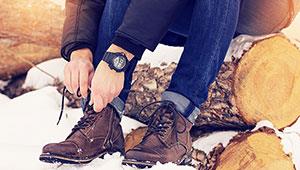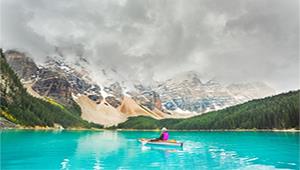
Camping trips aren't limited to the sunny days of summer anymore. With advancements in gear, clothing and weather forecasting, it's easier than ever to get outside in all kinds of weather. In fact, camping has become a year-round activity.
You can try to plan your trips around good camping weather, but you should always think like the Boy Scouts and be prepared for anything. Here's how.
Anticipate Dramatic Changes
The planet's climate is changing. Spring arrives earlier. Summers are hotter. Storms are more frequent and powerful. And winter is getting colder.
That's why it's important to anticipate the impact these dramatic changes can have on your next trip. It's also vital to keep a positive attitude towards whatever surprises nature brings your way. After all, you can't control the weather, but you can adapt to it.
Get Weather Forecasts
Unusual or extreme weather can be unpleasant if you're not ready for it. Unlike a gentle summer shower, a powerful thunderstorm can take all the fun out of things. Same goes for starting out in calm 90-degree heat down in a valley and finding five feet of snow and driving winds at your 7,000-foot elevation campground.
To limit unexpected surprises, check camping weather forecasts online. These services are easy to use: Simply enter the zip code of your destination and you can get a weather forecast for that region for up to 15 days in advance. Some weather forecast sites can also text weather updates to your smartphone--you'll need a mobile signal, of course.
If your camping plans take you to wilderness areas where--heaven forbid--cell phone service is non-existent, weather radios are reliable backups. These range from simple battery-operated weather alert units and crank-type radios that require no batteries, to CB radios with National Oceanic and Atmospheric Administration (NOAA) channels for use with your motorhome or tow vehicle.
Inclement Camping Weather
If it's not clear skies, a light breeze and 73 degrees with 50 percent humidity, then it must be inclement weather, right? Here's how to deal with all kinds of natural occurrences.
Rain and Floods: These are perhaps the most underestimated dangers to campers. A downpour 5 miles away may appear to have no effect on you where you are...until thousands of gallons of untamed water come rushing down that dry riverbed and catches you unprepared. Even if you're on the high ground, what about the dusty old road you drove in on? It could be days before help can reach you.
And don't even think about driving your rig across that "shallow" stream. It only takes 18 to 24 inches of water to float the average vehicle. And once you start bobbing, your steering wheel is useless. Trying to cross on foot is even more dangerous as moving water in incredibly powerful. It's best to stay on high ground until the water subsides.
Winds: Contrary to what you might expect, hiking or camping in a forest offers very little protection against high winds--especially at upper elevations where trees are likely to have shallow roots. These trees can blow over easily and fill the air with flying, debris and branches.
If high winds descend upon you, seek shelter in a heavy, solid structure, a large, stable rock formation or a cave. Out on flatlands without ground cover, blowing dirt and gravel pose a serious hazard, so find shelter.
Lightning: While lightning can be awesome to watch from a distance, you don't want to guess where it might hit. To minimize your risk:
- Don't be the tallest object around. If you're in an open field get as low as you can, but don't lie flat on the ground. Instead, squat down on the balls of your feet. The idea is to be as small as possible and have as little contact with the ground as you can. If you're carrying a backpack get rid of it. It doesn't attract lightning, but dropping the extra weight means you can get to shelter faster.
- Don't be near the tallest object around, such as a solitary tree. Lightning is attracted to the thing closest to it and seeking shelter at the base of a large tree is often what causes people to get struck.
- There are no reliable warning signs that lightning is about to strike. Don't depend on your hair standing on end to clue you in. If your hair does stand up, take steps to protect yourself. Get inside your RV or motor vehicle if you can, or a solid wooden structure. Avoid tents and stay away from metal awnings that shelter picnic tables.
- There is no safe distance from a thunderstorm. Lightning has been known to travel miles before striking the ground. If you can see it, you should take shelter.
- Follow the 30/30 rule. If you see a flash and thunder reaches you in 30 seconds or less, get under shelter. And wait 30 minutes after the last lightning and thunder before resuming your activities.
- 1
- of
- 2









Discuss This Article